Sectors
Heavy Earthmoving Machinery & Material Handling Equipment
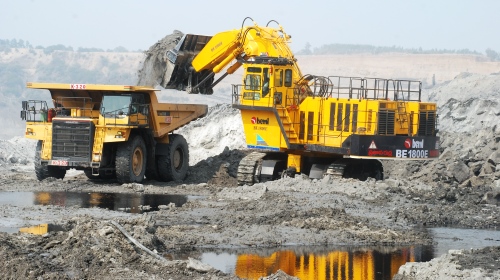
Global heavy construction equipment market expected to reach USD 231.3 billion by 2025, at a CAGR of 6.9% between 2019 and 2025”. The global heavy construction equipment market is expected to grow significantly within the next few years, owing to the rising product demand from various industries, such as construction, mining, oil and gas, infrastructure, forestry etc.
We deal with mainly four type of heavy machinery segment as under :
- Earthmoving
- Material Handling
- Heavy Construction Vehicles
- Others (Pavers/Asphalt Finishers/Compactors, Road Rollers etc)
These machinery has got wide range of application like Excavation, Irrigation, Heavy Lifting, Tunnelling & drilling, Transportation, Material handling and Processing.
The Covid-19 effect on these sector has brought significant contribution of technology into this. AIOT, machine learning, 3D printing is changing overall dynamics in this Industry as per as maintenance, asset management, safety and operation is concerned.
Any range of manufacturers across the Globe are at continued challenge for disruption due to volatility in costs, Govt policy, COVID-19 pandemic and Global economic crisis situation. The Post-Covid world shall change the overall manufacturing industry at a complete different stage. Manufacturers are turning to the digital revolution in the tune of Industry 4.0 to Industry X.0. Augmented reality, AI, Automation, Robotics are the going to be the core area for implementation in manufacturing sector. The Global supply chain also is rapidly changing due to Covid-19.
In India, manufacturing has emerged as one of the high growth sectors. Prime Minister of India, Mr Narendra Modi, had launched the ‘Make in India’ program to place India on the world map as a manufacturing hub and give global recognition to the Indian economy. India has become potential destination for world leaders for Global sourcing hub. Post Covid-19, many European, American and south Korean companies are aiming India as a manufacturing hub for next possible alternative after China.
Manufacturing
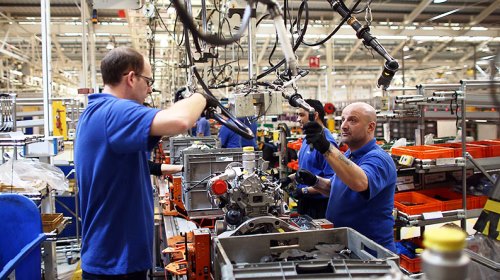
Manufacturing

Any range of manufacturers across the Globe are at continued challenge for disruption due to volatility in costs, Govt policy, COVID-19 pandemic and Global economic crisis situation. The Post-Covid world shall change the overall manufacturing industry at a complete different stage. Manufacturers are turning to the digital revolution in the tune of Industry 4.0 to Industry X.0. Augmented reality, AI, Automation, Robotics are the going to be the core area for implementation in manufacturing sector. The Global supply chain also is rapidly changing due to Covid-19.
In India, manufacturing has emerged as one of the high growth sectors. Prime Minister of India, Mr Narendra Modi, had launched the ‘Make in India’ program to place India on the world map as a manufacturing hub and give global recognition to the Indian economy. India has become potential destination for world leaders for Global sourcing hub. Post Covid-19, many European, American and south Korean companies are aiming India as a manufacturing hub for next possible alternative after China.
Railway
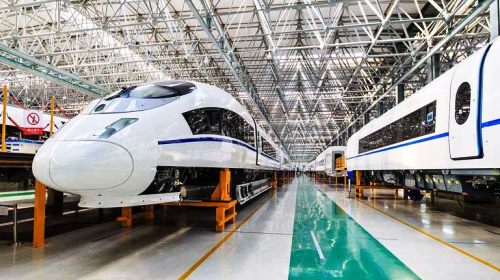
The global Railway segment is technologically fragmented in various country. The technological changes are being adopted in different ways from developed to underdeveloped country. Rail transport across the world is growing steadily and advance technology is being adopted to enhance efficiency and safety of Railway.
India has the world’s third-largest rail network under single management. Indian Railway has 13,452 passenger trains and 9,141 freight trains. As of 2017-18, Indian Railway had a total route network of about 68,442 kms and operated more than 22,300 trains daily. A total of 1,106 RKM (Route kilometre) has been electrified across the entire Indian Railways network. By 2024, Indian railways will be run completely on electricity.
Digitalisation has emerged as the key driver for innovation in the railways. Digitalisation plays a pivotal role for innovation in the railway industry which provides significant opportunities in real-time information monitoring & data acquisition, predictive maintenance, IoT driven asset management, advanced signalling & Train control management system etc.
Global defense & aerospace industry has become versatile, wider and most expensive sector since the beginning of the 21st century. Before this, it was mainly focused to the research, development, and production of defense weaponry and technologies. The defense industry first developed during World War I and II with the use of war planes, heavy duty multipurpose vehicles, tanks and missile/rockets in war. Manufacturers that produced similar goods turned to the manufacture of war goods, and many continued to produce them after the war was over. After this, surveillance, protection of border, anti-terrorism, data protection etc became more stringent which pushes the thrust of bringing sophistication in this sector Globally. Every country is spending huge share of their GDP in defence to be the self-reliance and to gain resources. Scientists, engineers, technology programmer are in demand in this industry. It is projected to have $ 26 billion USD opportunity in India for Defence & Aerospace Industry.
The aviation and aerospace industries are also deeply connected to the defense industry, and often represent a very large percentage of defense spending. The Aerospace/Defense Industry serves, as its name represents, two main markets: Aerospace, which largely comprises the production, sale, and service of commercial aircraft. And Defense, which is dependent on the nation’s need for military weapons and systems designed to operate on land, sea, and in the air. Also included in this industry is the production of general aircraft, UAV/drones and space vehicles, usually satellites, for both military and commercial use. In today’s Defense & Aerospace Industry is coping up with the topics like UAV flight training, smart maintenance, homeland security, disruptive technology like 3D printing, intelligent ballistic system etc.
Defence & Aerospace
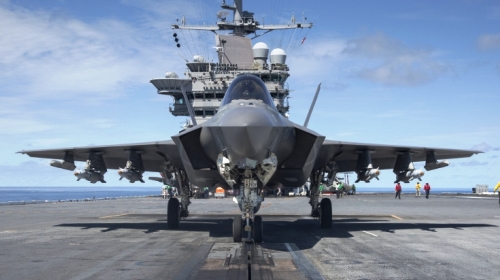
Defence & Aerospace

Global defense & aerospace industry has become versatile, wider and most expensive sector since the beginning of the 21st century. Before this, it was mainly focused to the research, development, and production of defense weaponry and technologies. The defense industry first developed during World War I and II with the use of war planes, heavy duty multipurpose vehicles, tanks and missile/rockets in war. Manufacturers that produced similar goods turned to the manufacture of war goods, and many continued to produce them after the war was over. After this, surveillance, protection of border, anti-terrorism, data protection etc became more stringent which pushes the thrust of bringing sophistication in this sector Globally. Every country is spending huge share of their GDP in defence to be the self-reliance and to gain resources. Scientists, engineers, technology programmer are in demand in this industry. It is projected to have $ 26 billion USD opportunity in India for Defence & Aerospace Industry.
The aviation and aerospace industries are also deeply connected to the defense industry, and often represent a very large percentage of defense spending. The Aerospace/Defense Industry serves, as its name represents, two main markets: Aerospace, which largely comprises the production, sale, and service of commercial aircraft. And Defense, which is dependent on the nation’s need for military weapons and systems designed to operate on land, sea, and in the air. Also included in this industry is the production of general aircraft, UAV/drones and space vehicles, usually satellites, for both military and commercial use. In today’s Defense & Aerospace Industry is coping up with the topics like UAV flight training, smart maintenance, homeland security, disruptive technology like 3D printing, intelligent ballistic system etc.
Industrial Automation
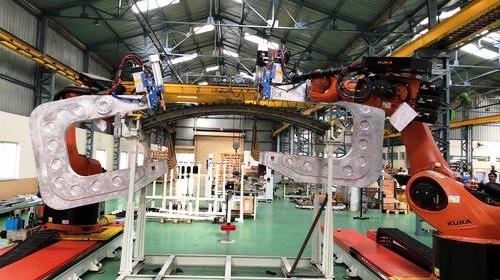
The rise of Industry 4.0 and the Internet of Things provides both rich opportunity and continued relevance in the digital era. In today & future world; IoT, AI, Virtua & Augmented reality, 3D printing is going to play a major role in the Industrial automation sector. Many organizations, however, are still grappling with what being digital & Automation truly means. Increasing adaptation of smart grid technology with new SCADA & PLC system, IoT and Robotics are the key drivers for Industrial automation. Various industrial automated system like automated PI, Automated Guided Vehicle, smart warehousing, automated staffs etc
The changing Global business environment due to COVID-19, pushes most of the modern large-scale manufacturing operations to automation which require minimum or zero human intervention. Industrial automation is certainly the need of the hour as conventional manufacturing mechanisms are inadequate to meet current requirements. The market is projected to exhibit a compound annual growth rate of 9.35% during the forecast period (2018 to 2023).
The global mining & metals market is highly dependent on the country’s economic growth which is directly linked with the infrastructural growth. Even today, most of the technology involved in this sector is conventional which is going to be changed at rapid pace due to Covid-19 pandemic. AI, IoT based Digital mining, block chain etc are changing these sector in a new direction with more transparency and controlled way of process.
India produces 95 minerals– 4 fuel-related minerals, 10 metallic minerals, 23 non-metallic minerals, 3 atomic minerals and 55 minor minerals (including building and other minerals). India is the third largest producer of coal. Coal production in the country stood at 688.8 million tonnes in FY18. India’s coal production in FY19 to reach 739.36 million tonnes. India ranks fourth in terms of iron ore production globally. Production of iron ore in FY19 (up to Feb 19) stood at 187.60 million tonnes. India has around eight per cent of world’s deposits of iron ore. India became the world second largest crude steel producer in 2018 with output 106.5 million tonnes. According to Ministry of Mines, India has the 7th largest bauxite reserves – around 2,908.85 million tonnes in FY18. Aluminium production stood at 2.25 MT in FY19 (up to February 2019) and is forecasted to grow to 3.33 million tonnes in FY20.
Mining, Metals & Minerals
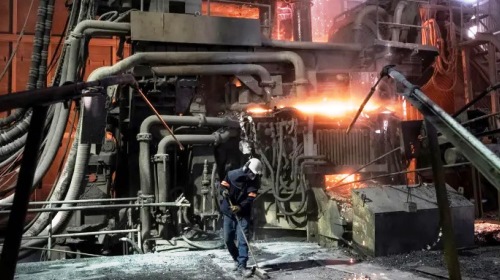
Mining, Metals & Minerals

The global mining & metals market is highly dependent on the country’s economic growth which is directly linked with the infrastructural growth. Even today, most of the technology involved in this sector is conventional which is going to be changed at rapid pace due to Covid-19 pandemic. AI, IoT based Digital mining, block chain etc are changing these sector in a new direction with more transparency and controlled way of process.
India produces 95 minerals– 4 fuel-related minerals, 10 metallic minerals, 23 non-metallic minerals, 3 atomic minerals and 55 minor minerals (including building and other minerals). India is the third largest producer of coal. Coal production in the country stood at 688.8 million tonnes in FY18. India’s coal production in FY19 to reach 739.36 million tonnes. India ranks fourth in terms of iron ore production globally. Production of iron ore in FY19 (up to Feb 19) stood at 187.60 million tonnes. India has around eight per cent of world’s deposits of iron ore. India became the world second largest crude steel producer in 2018 with output 106.5 million tonnes. According to Ministry of Mines, India has the 7th largest bauxite reserves – around 2,908.85 million tonnes in FY18. Aluminium production stood at 2.25 MT in FY19 (up to February 2019) and is forecasted to grow to 3.33 million tonnes in FY20.
Energy
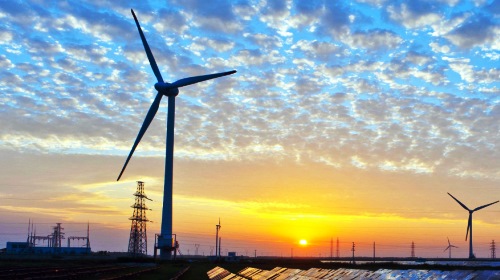
Though the Covid-19 and subsequent lockdown has majorly affected the energy sector due to lower consumption, the new normalcy changes the way of energy utilisation across the globe. Producing energy in more efficient and non-hazardous way is a primary objective of energy company. Therefore, technology plays a pivotal role in Global energy sectors in the area of conventional thermal, renewable and nuclear. The rise of smart city, e-mobility/hydrogen fuel cell becomes a new adaptation by the civilisation.
The Indian power sector is one of the most diversified in the world. Sources for power generation in India range from conventional sources like coal, lignite, natural gas, oil, hydro and nuclear power to other viable nonconventional sources like wind, solar and agriculture and domestic waste. Because of insufficient fuel supply and power generation and transmission capacity, the country has problems of electricity shortage. India one of the world’s biggest greenhouse gas emitter after US and China, when emphasizes on solar and wind power is also expected to strengthen the country’s standing at global climate change negotiations. Meeting future electricity needs means challenging and sometimes wrenching decisions about the choice of fuel required to keep the lights on and power flowing.
Over the five years to 2019, the prices of crude oil and natural gas have fluctuated sharply despite steady growth in production. Since 2016, oil prices have recovered from $40, reaching $67 in Sep, 2018. The recovery happened due to several factors like success of the production restraint agreement between OPEC (Organization of the Petroleum Exporting Countries) and non-OPEC countries. The oil and gas global supply-chain includes activities such as domestic and international transportation, ordering and inventory visibility and control, materials handling, import/export facilitation and information technology.
Oil & gas industry in India contributes almost 15% of national GDP. India is rising as a potential refining hub because the capital costs are lowered by 25–50% here in comparison to other Asian countries. India ranks fifth in the category of refining. Its share is 3% of the capacity worldwide and is going to improve further by 45% over the next 5 years. This is in accordance with a report compiled by Deutsche Bank.
The sector is highly driven by technological advancement and heavy machineries which are involved to manage major three process, e.g; Exploration, Drilling and Production. This process industry requires maximum stringent compliances for safety & control system. Use of UAV for surveillance to Automation for production process is the new age technology for this sector. But the impact of coronavirus (COVID-19) pandemic is majorly affect this sector throughout oil’s global supply chains and ripple into other parts of the energy sector.
Oil & Gas
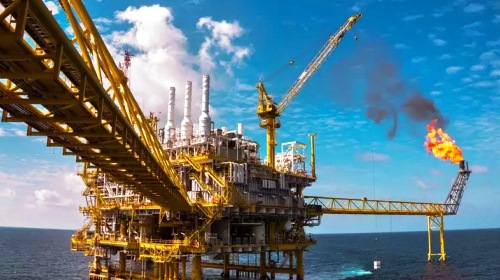
Oil & Gas

Over the five years to 2019, the prices of crude oil and natural gas have fluctuated sharply despite steady growth in production. Since 2016, oil prices have recovered from $40, reaching $67 in Sep, 2018. The recovery happened due to several factors like success of the production restraint agreement between OPEC (Organization of the Petroleum Exporting Countries) and non-OPEC countries. The oil and gas global supply-chain includes activities such as domestic and international transportation, ordering and inventory visibility and control, materials handling, import/export facilitation and information technology.
Oil & gas industry in India contributes almost 15% of national GDP. India is rising as a potential refining hub because the capital costs are lowered by 25–50% here in comparison to other Asian countries. India ranks fifth in the category of refining. Its share is 3% of the capacity worldwide and is going to improve further by 45% over the next 5 years. This is in accordance with a report compiled by Deutsche Bank.
The sector is highly driven by technological advancement and heavy machineries which are involved to manage major three process, e.g; Exploration, Drilling and Production. This process industry requires maximum stringent compliances for safety & control system. Use of UAV for surveillance to Automation for production process is the new age technology for this sector. But the impact of coronavirus (COVID-19) pandemic is majorly affect this sector throughout oil’s global supply chains and ripple into other parts of the energy sector.
Infrastructure
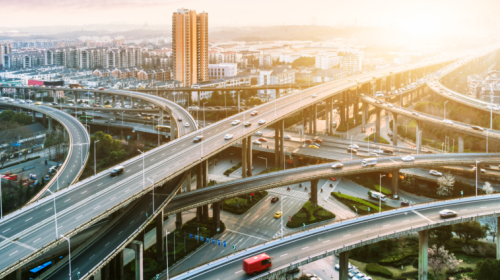
The Infrastructure sector compiles the development of fixed assets, e.g; building, bridge, municipality, smart city, village etc. Actually the overall infrastructure of a nation means all the pivotal development areas. We here, mainly focus to the future and new age infrastructure segment and focused to the various technological up gradation required to cope up with the same pace of infrastructural development.
The global infrastructure market is US$3.1 trillion in 2017, and is expected to reach US$4.4 trillion by 2022. Asia-Pacific will continue to account for the largest share of the global infrastructure construction industry, given that it includes the large markets of China and India although there is a downside risk to growth in China. India is heavily investing in Infrastructure segment in the areas like bullet train, smart city, logistic hub etc.
Covid-19 pandemic affects heavily to the Small & medium sector and start-ups in India. Govt tried to motivate the sector by providing wider stimulus although the same is required for thrust for boosting the economy. One side effect of continuous lockdown, another side the impact of poor cash flow pushes MSME segment in doubtful condition.
GOI introduced various web portal and technology platform to address the MSME issues. Given the government of India’s ‘Make in India’ push, along with a push to attract greater FDI, the Indian MSMEs sector is poised for rapid growth and integration with major global value chains.
As per the official estimates, there are about 63.05 million micro industries, 0.33 million small, and about 5,000 medium enterprises in the country. India is also having a largest start up ecosystem although India is yet to reform the overall ecosystem in an innovative way.
MSME, SME, Start-ups
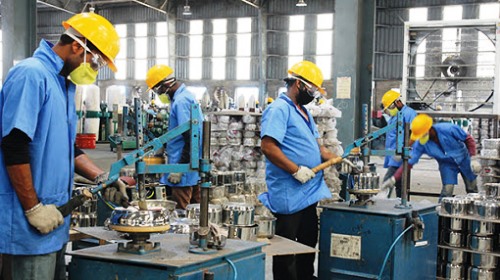
MSME, SME, Start-ups

Covid-19 pandemic affects heavily to the Small & medium sector and start-ups in India. Govt tried to motivate the sector by providing wider stimulus although the same is required for thrust for boosting the economy. One side effect of continuous lockdown, another side the impact of poor cash flow pushes MSME segment in doubtful condition.
GOI introduced various web portal and technology platform to address the MSME issues. Given the government of India’s ‘Make in India’ push, along with a push to attract greater FDI, the Indian MSMEs sector is poised for rapid growth and integration with major global value chains.
As per the official estimates, there are about 63.05 million micro industries, 0.33 million small, and about 5,000 medium enterprises in the country. India is also having a largest start up ecosystem although India is yet to reform the overall ecosystem in an innovative way.
PSUs, Government, Corporate
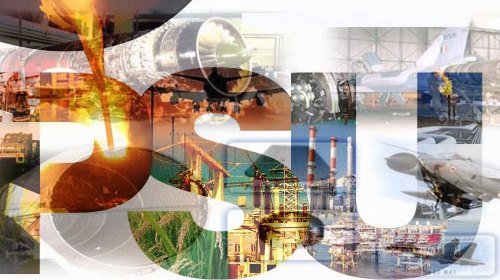
The impact of work dynamics & technology, an aging workforce, globalization, policy paralysis and high overhead are the crucial challenges of today’s government sector. Therefore, transformation in Government sector and adaption to the fast-changing world while reconnecting with citizens becomes a major role of Government which require right structures, people, systems, policies, and culture in line with the changing world.
Strong economic growth, training of people, well connected networking system to reach the citizen, forming future policy, foreign reserve etc comes under the Strategic or, Incubation centre of Government. In today’s world, it is needed to bring corporate style of work and policy formation in Government sectors.
The Indian PSU goes through a massive changes due to disinvestment, strategic sales, merger to boost up economy and bringing competitiveness.
This include mainly the disruptive innovation. The disruptive technology across Globe is growing rapidly from incubation to final shape of development. Mankind are reaching to the sky of innovation which brings disruptive innovation like 3D printing, AI, block chain, the humanoid robots etc. These technical innovations render existing technologies and social relations obsolete or radically altered, possibly driving harmful direct and indirect social, economic and ecological disruptions. Disruptive innovations, in contrast, don’t attempt to bring better products to established customers in existing markets. Rather, they disrupt and redefine that trajectory by introducing products and services that are not as good as currently available products. But disruptive technologies offer other benefits-typically, they are simpler, more convenient, and less expensive products that appeal to new or less-demanding customers.
Others – New Age Technology

Others – New Age Technology

This include mainly the disruptive innovation. The disruptive technology across Globe is growing rapidly from incubation to final shape of development. Mankind are reaching to the sky of innovation which brings disruptive innovation like 3D printing, AI, block chain, the humanoid robots etc. These technical innovations render existing technologies and social relations obsolete or radically altered, possibly driving harmful direct and indirect social, economic and ecological disruptions. Disruptive innovations, in contrast, don’t attempt to bring better products to established customers in existing markets. Rather, they disrupt and redefine that trajectory by introducing products and services that are not as good as currently available products. But disruptive technologies offer other benefits-typically, they are simpler, more convenient, and less expensive products that appeal to new or less-demanding customers.
